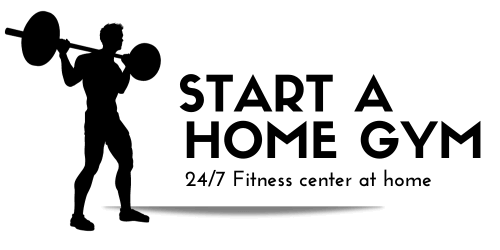So, you’ve decided to set up a home gym and embark on the wonderful journey of working out in the comfort of your own space. Congratulations on taking this step towards a healthier lifestyle! Now, you may be wondering how exactly do you set effective fitness goals for your home gym workouts? Well, fear not, because we’ve got you covered. In this article, we will explore the key steps and strategies to help you set achievable and motivating fitness goals that will keep you on track and excited about your home gym workouts. Let’s dive in!

Creating a Plan for Success
Assess Your Current Fitness Level
Before setting fitness goals for your home gym workouts, it’s important to assess your current fitness level. Take some time to evaluate your strength, endurance, flexibility, and cardiovascular fitness. This will help you understand where you currently stand and what areas you need to focus on. You can do this by performing fitness tests or consulting with a professional trainer who can provide guidance and assessments.
Identify Your Priorities
Once you have assessed your current fitness level, it’s essential to identify your priorities. What do you want to achieve through your home gym workouts? Whether it’s weight loss, building muscle, improving cardiovascular health, or enhancing flexibility, clearly define your priorities. This will help you stay focused and determine the specific goals you need to set.
Establish Realistic Timeframes
Setting a timeline is crucial for staying motivated and seeing progress. Be realistic about the time it will take to achieve your fitness goals. Remember, fitness is a journey, not a quick fix. Break down your goals into smaller milestones and establish timeframes accordingly. This will provide you with a sense of accomplishment as you work towards your long-term objectives.
Consult with a Professional
If you’re unsure about how to set effective fitness goals, it’s always a good idea to consult with a professional. A personal trainer or fitness coach can provide valuable insights and tailor a plan that meets your specific needs. They can help you set realistic goals, create a customized workout routine, and provide ongoing support and guidance throughout your fitness journey.
Track Your Progress
Tracking your progress is essential to stay motivated and see how far you’ve come. Keep a workout journal where you can record your workouts, achievements, and any challenges you encountered. This will allow you to track your progress over time and make adjustments to your goals and workout routine if necessary. Additionally, consider using technologies like fitness tracking apps to monitor your progress more effectively.
Defining SMART Goals
Specific
When setting fitness goals, it’s important to be specific. Rather than saying you want to “get in shape,” be more precise by saying you want to “lose 10 pounds” or “reduce body fat by 5%.” Specific goals give you a clear target to aim for and help you stay focused and motivated.
Measurable
Make sure your fitness goals are measurable. This means you should be able to track and assess your progress towards achieving them. For example, instead of saying you want to “improve cardiovascular fitness,” set a goal to “complete a 5k run in under 30 minutes.” Measurable goals allow you to track your progress and celebrate milestones along the way.
Achievable
Setting achievable goals is crucial for maintaining motivation and avoiding disappointment. Be realistic about your starting point and set goals that are within reach. Gradually increasing the intensity and difficulty of your workouts will help you progress and achieve long-term success.
Relevant
Your fitness goals should be relevant to your overall priorities. Ensure they align with the outcomes you want to achieve and are meaningful to you. Setting relevant goals will help you stay engaged and committed throughout your fitness journey.
Time-Bound
Set a time frame for each of your fitness goals. Having a deadline creates a sense of urgency and helps you stay on track. Whether it’s a few months or a year, having a specific timeline will keep you focused and motivated to work towards your goals consistently.

Setting Specific Goals
Focus on Desired Body Composition
If your priority is to change your body composition, set specific goals related to that. For example, aim to reduce body fat percentage by a certain amount or increase lean muscle mass in specific areas. This will help you tailor your workouts and nutrition plan accordingly.
Target Specific Muscles or Areas
If you have specific muscles or areas you want to target, set goals that focus on those. Whether it’s toning your arms, sculpting your abs, or strengthening your back, creating targeted goals will help you design exercises and routines that address those areas.
Improve Cardiovascular Fitness
If your goal is to improve cardiovascular fitness, set goals related to endurance and stamina. This could include running a certain distance without stopping, increasing your cycling speed, or improving your performance in a specific cardio exercise. By setting measurable targets, you can track your progress and see improvements over time.
Enhance Flexibility and Mobility
Flexibility and mobility are crucial for overall fitness and injury prevention. Set goals related to improving your flexibility, such as touching your toes or performing a full split. Additionally, work on mobility goals like improving your range of motion in specific joints or being able to perform advanced yoga poses.
Increase Strength and Endurance
Strength and endurance are foundational to fitness. Set goals that involve increasing the amount of weight you can lift or the number of repetitions you can perform for specific exercises. This will help you track your progress and challenge yourself to push beyond your current limits.
Measuring Progress
Journaling Workouts and Achievements
Keeping a workout journal is an excellent way to track your progress. Write down details of each workout, including exercises, sets, reps, and rest periods. This will help you see how far you’ve come and identify areas where you can improve. Additionally, celebrate your achievements by documenting personal bests and milestones reached.
Using Body Measurements and Photos
Take periodic body measurements and photos to visually track your progress. Measure key areas like waist, hips, arms, and thighs to see changes in body composition. Similarly, capturing photos from different angles can provide a visual representation of your progress and keep you motivated.
Tracking Weight and BMI
If weight loss or maintenance is a goal for you, regularly tracking your weight can provide valuable insights. Use a reliable scale and record your weight to observe trends over time. Additionally, calculate your BMI (Body Mass Index) to assess your overall health and degree of progress.
Monitoring Heart Rate and Recovery
Using heart rate monitors during workouts can help you track your exertion levels and ensure you’re reaching your target heart rate zones. This information is valuable for cardiovascular fitness goals. Additionally, monitor your heart rate recovery after intense workouts as an indicator of your fitness level.
Recording Personal Bests
Achieving personal bests in your workouts is an exciting accomplishment. Keep a record of your personal bests for different exercises, weights lifted, or distances covered. This will show you how much you’ve improved and provide motivation to push yourself further.

Creating a Realistic Workout Routine
Consider Time Commitments
When creating your workout routine, take into account your time commitments and availability. Be honest with yourself about how many days per week and how much time you can realistically dedicate to exercise. This will help you establish a routine that fits your schedule and is sustainable in the long run.
Choose Appropriate Exercises
Choose exercises that align with your goals and are suitable for your fitness level. If you’re new to working out or have certain limitations, start with exercises that cater to your current abilities. Gradually progress to more challenging exercises as you build strength, endurance, and confidence.
Determine Frequency and Duration
Decide how often you will work out and how long each session will be. This will depend on your fitness goals, availability, and recovery needs. Aim for a combination of cardiovascular, strength training, and flexibility sessions to maintain a well-rounded routine.
Progress Gradually
Avoid the temptation to push yourself too hard in the beginning. Progress gradually by increasing the intensity, duration, or weight lifted over time. This will help prevent injuries and allow your body to adapt to the demands of your workouts.
Incorporate Rest and Recovery
Rest and recovery are integral parts of any successful fitness routine. Schedule regular rest days to allow your body time to repair and rebuild. Additionally, consider incorporating active recovery activities like stretching, foam rolling, and yoga to enhance your overall recovery process.
Staying Motivated and Accountable
Find an Accountability Partner
Having an accountability partner can significantly increase your chances of staying motivated and consistent with your home gym workouts. Find someone with similar fitness goals who can provide support, encouragement, and a sense of healthy competition. Share your progress, challenges, and successes with each other regularly.
Join Virtual Fitness Communities
Virtual fitness communities have become increasingly popular and offer a great way to stay motivated and connected. Join online fitness groups, forums, or social media communities where you can share your fitness journey, ask questions, and seek inspiration from others who are on a similar path.
Reward Yourself Milestones
Setting milestones and rewarding yourself along the way is an excellent way to stay motivated and celebrate your progress. Treat yourself to something you enjoy when you reach a specific goal, whether it’s buying new workout gear, booking a spa day, or indulging in a favorite healthy treat. Rewards can be powerful motivators.
Stay Consistent with Scheduling
Consistency is key to achieving your fitness goals. Set a regular schedule for your home gym workouts and stick to it as much as possible. Treat exercise as a non-negotiable appointment with yourself. This will help create a habit, making it easier to stay consistent in the long run.
Review and Adjust Goals Regularly
Regularly review your goals and assess your progress. Are you on track? Do your goals need to be adjusted? It’s essential to be flexible and make adjustments as needed. As you reach certain goals, set new ones to keep challenging yourself and continue making progress.
Utilizing Technology and Apps
Fitness Tracking Apps
Fitness tracking apps can be valuable tools in monitoring your workouts, progress, and overall health. They often provide features like workout tracking, calorie tracking, heart rate monitoring, and goal setting. Find apps that align with your needs and preferences to enhance your fitness journey.
Virtual Personal Trainers
Virtual personal trainers are a convenient and effective way to receive professional guidance and support from the comfort of your home. Many trainers offer virtual coaching sessions via video calls, providing personalized workout plans, form checks, and ongoing motivation.
Home Gym Equipment Apps
If you have home gym equipment, explore apps specifically designed for those tools. These apps often include workout routines, instructional videos, and progress tracking features tailored to the specific equipment you have. This allows you to maximize the potential of your home gym and stay engaged with your workouts.
Online Workout Classes
Online workout classes offer a wide range of options to suit various preferences and fitness levels. From high-intensity interval training (HIIT) to yoga and dance workouts, you can find classes that align with your goals and interests. These classes provide structure, guidance, and an element of community even when working out at home.
Nutrition and Meal Planning Apps
Fitness goals are closely tied to nutrition and healthy eating. Utilize nutrition and meal planning apps to help you track your food intake, plan your meals, and ensure you’re meeting your nutritional needs. These apps often provide recipe ideas, grocery shopping lists, and macro tracking features to support your fitness goals.
Addressing Challenges and Obstacles
Lack of Motivation
It’s common to experience a lack of motivation from time to time. To overcome this, remind yourself of your goals and why you started in the first place. Look for sources of inspiration, such as success stories, fitness influencers, or motivational podcasts. Additionally, consider diversifying your workouts and trying new exercises to keep things exciting.
Dealing with Plateaus
Plateaus are a natural part of any fitness journey. When you hit a plateau and your progress seems to stall, it’s essential to reassess your routine. Modify your workouts, increase the intensity, or try new exercises to challenge your body in different ways. Remember that plateaus are temporary, and consistent effort will eventually yield results.
Overcoming Time Constraints
Time constraints can make it challenging to prioritize workouts. Look for creative ways to incorporate exercise into your daily routine, such as taking brisk walks during lunch breaks or doing bodyweight exercises during TV commercial breaks. Additionally, consider shorter, more intense workouts to make the most of the time you have available.
Adapting to Equipment Limitations
If you have limited equipment in your home gym, get creative with your exercises. Utilize bodyweight exercises, resistance bands, or household items as makeshift weights. Many exercises can be modified to target different muscles and provide a challenging workout, even with minimal equipment.
Maintaining Consistency
Consistency is a common challenge when it comes to home gym workouts. To maintain consistency, establish a routine and stick to it as closely as possible. Set reminders, create a dedicated workout space, and eliminate distractions. Surrounding yourself with visual cues like motivational quotes or workout equipment can also help you stay focused on your goals.
Incorporating Variety and Fun
Trying New Exercises and Routines
Routine can lead to boredom and decreased motivation. Keep your workouts fresh and exciting by trying new exercises and routines regularly. Explore different workout styles, such as HIIT, Pilates, or kickboxing. This variety will challenge your body in different ways and prevent monotony.
Exploring Different Fitness Disciplines
Expand your fitness horizons by exploring different disciplines or activities. Sign up for a dance class, try rock climbing, or take up martial arts. These new experiences will not only provide a full-body workout but also add a sense of adventure and fun to your fitness routine.
Joining Virtual Challenges
Many fitness communities and organizations host virtual challenges that allow participants to compete, support each other, and achieve specific goals together. Whether it’s a virtual 5k run, a push-up challenge, or a yoga challenge, joining these challenges can provide motivation, accountability, and a sense of camaraderie.
Setting Training Goals Beyond Fitness
In addition to fitness-related goals, consider setting goals that go beyond physical performance. For example, you might aim to improve your mental focus during workouts, enhance your overall mood and well-being, or reduce stress levels through exercise. These holistic goals will contribute to an overall sense of wellness.
Rewarding Yourself with Enjoyable Activities
To stay motivated, reward yourself with enjoyable activities outside of your fitness routine. Whether it’s a movie night, a spa day, or a weekend getaway, allow yourself to indulge in activities that bring you joy and relaxation. These rewards serve as incentives to continue working towards your goals.
Maintaining a Balanced Lifestyle
Focus on Nutrition and Healthy Eating
Fitness goals cannot be achieved without paying attention to nutrition and healthy eating. Prioritize nutrient-dense foods, such as lean proteins, fruits, vegetables, whole grains, and healthy fats. Hydrate well and limit processed foods, sugary drinks, and excessive snacking. Use meal planning and tracking apps to stay on top of your nutritional goals.
Prioritize Quality Sleep and Rest
Adequate sleep and rest are crucial for recovery and overall well-being. Aim for 7-9 hours of quality sleep per night. Establish a relaxing bedtime routine and create a sleep-friendly environment. Incorporate rest days into your workout schedule to allow your body to repair and recharge.
Manage Stress Levels Effectively
Exercise is a powerful tool for managing stress, but it’s essential to incorporate other stress management techniques as well. Practice mindfulness, meditation, or deep breathing exercises to reduce stress levels. Engage in activities that bring you joy and help you unwind, such as reading, listening to music, or spending time in nature.
Stay Hydrated Throughout the Day
Proper hydration is crucial for optimal performance and overall health. Drink an adequate amount of water throughout the day, especially before, during, and after your workouts. Carry a water bottle with you as a reminder to stay hydrated and monitor your urine color as an indicator of hydration status.
Incorporate Active Breaks into Daily Routine
Sitting for long periods can negatively impact your health and fitness progress. Incorporate active breaks into your daily routine to combat sedentary behavior. Take short walks, stretch, or do quick bodyweight exercises throughout the day. These breaks not only benefit your physical health but also improve focus and productivity.


